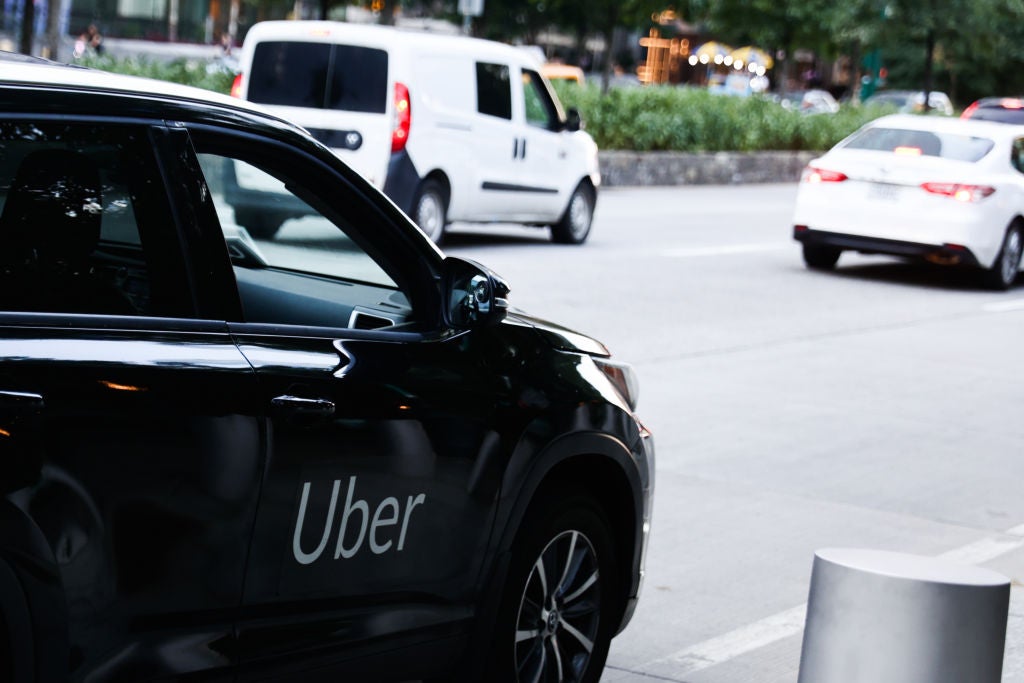
Uber has partnered with BYD to develop “autonomous-capable vehicles” and bring 100,000 electric vehicles (EVs) to the ride-hailing platform, the two companies announced on Wednesday (31 July).
The landmark deal between the US and Chinese companies will offer drivers lower vehicle pricing and financing. This will begin in Europe and Latin America, before expanding to Canada, Australia, New Zealand and the Middle East.

Access deeper industry intelligence
Experience unmatched clarity with a single platform that combines unique data, AI, and human expertise.
The multi-year partnership will bring up to 100,000 BYD EVs to Uber, despite regulators in the EU and US raising tariffs on imports of Chinese vehicles.
“As the largest global agreement of its kind, we are thrilled about the benefits this partnership will deliver for drivers, riders and cities,” Uber CEO Dara Khosrowshahi said in the release.
BYD has continued to beat Tesla in terms of total EV production for the past two years. The China-based company has also been heavily investing in factories overseas.
Notably, Uber and BYD made no mention of the US in their announcement, due to it being almost entirely unenterable by the manufacturer.

US Tariffs are shifting - will you react or anticipate?
Don’t let policy changes catch you off guard. Stay proactive with real-time data and expert analysis.
By GlobalDataUS President Joe Biden said he would raise tariffs on Chinese EVs to 102.5% this year, a significant increase from the 27.5% implemented by former president Donald Trump.
The EU and other countries have also been looking to raise tariffs on Chinese vehicle imports, which could make Uber’s goal of an entirely electric fleet in the US and Europe by 2030 difficult.
Is the world ready for self-driving cars?
Uber said that it is “well-positioned to bring autonomous vehicle (AV) technology to a global audience at scale”.
However, despite the growing hype throughout the 2010s and a clear vision of bringing mobility to sections of the market that have never before had access, such as children and the disabled, the challenges and roadblocks to full deployment of AVs have been immense.
According to GlobalData’s Thematic Intelligence: Autonomous Vehicles (2023) report, the leap taken from Society of Automotive Engineers (SAE) Level 1 autonomy to Level 2 has proven to be minor compared with the jump in complexity needed for Level 3 ‘eyes-off’ AV operation.
The SAE defines six levels of driving automation ranging from 0 (fully manual) to 5 (fully autonomous).
Even Level 3 vehicles will appear simple in comparison with the higher levels and capabilities demanded by truly self-driving Level 4 and Level 5 models, both of which might not include controls for human drivers, according to the report.
However, according to Rana Charara, a strategic market leader in global industrial tech provider Trimble’s autonomy division, self-driving car technology is ready and capable, but the Highway Code, infrastructure and other unknowns need to change before increasing the fleet of AVs.
“The technology at the forefront of self-driving vehicles is already in use and fully capable of supporting more autonomy,” Charara said. “A suite of sensors, augmented satellite signals and ever-learning AI software can ensure geographic data accuracy of up to a few centimetres on the road.”
Charara believes that moving to Level 4 and 5 autonomy will be a difficult process, and much harder to plan for in busy, dynamic and urban environments.
“Some infrastructure may need to be redesigned, cities made smarter and perhaps even digitally interconnected, and ideally, 5G coverage extended,” Charara said. “The Highway Code will also need to be considered; for example, how will an autonomous car react when it has to technically break the law by crossing into the other lane to overtake a cyclist?”







